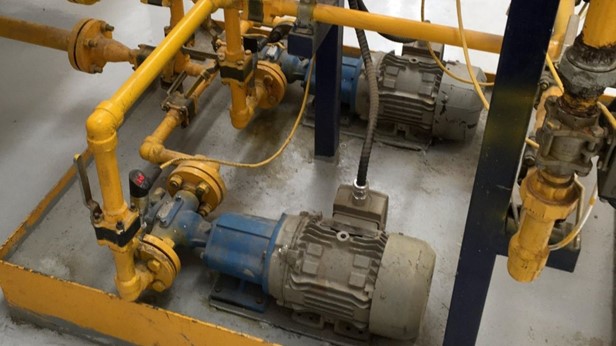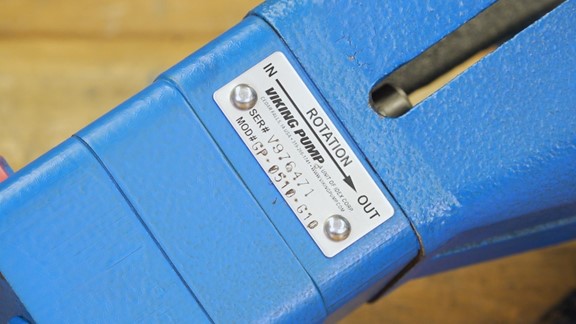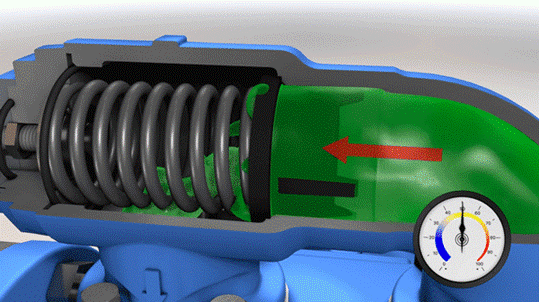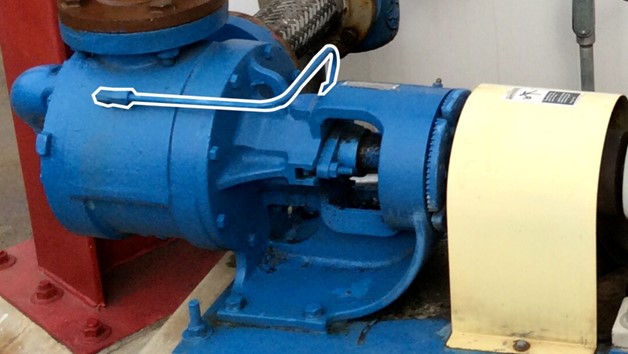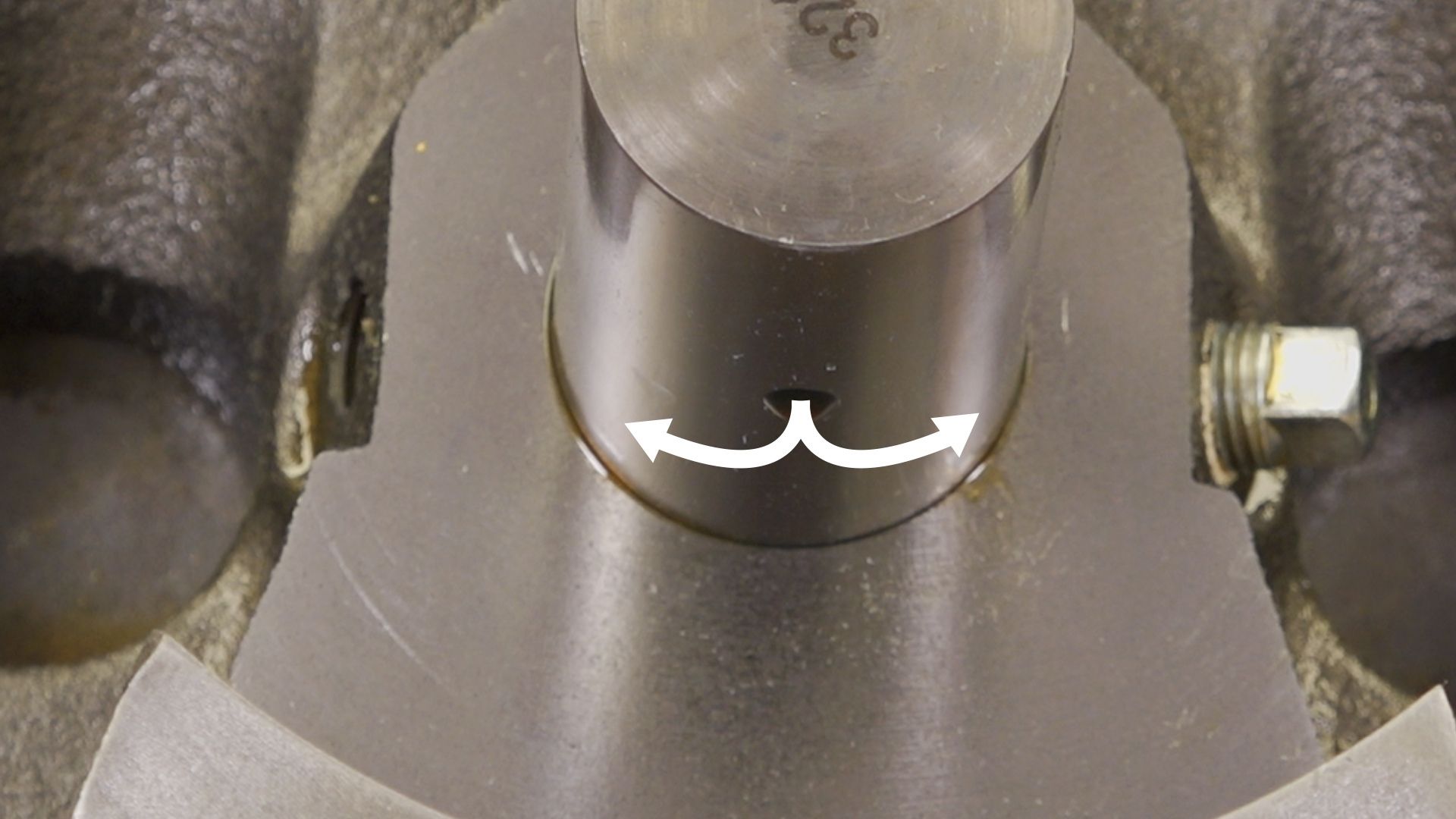Can I reverse a pump to change direction of flow?
With Viking pumps the answer is usually “yes,” but before you turn that “reverse” switch on your pump’s motor starter or variable frequency drive, there are a number of things to consider, which are discussed here.
Why would you want to run a pump in both rotations and both directions of flow? This is common for pumps loading or unloading liquids from tanker trucks or railcars. Once the load is complete, they are briefly run in reverse to strip-clean the lines. There are many other reasons you might want bi-directional pumping capabilities.
But many of the process pumps we rely on every day have one critical limitation: They can only create flow in one direction – they cannot be reversed. Centrifugal pumps, reciprocating pumps, including dosing pumps and Air-Operated Double Diaphragm (AODD) pumps, rotary vane pumps and several others cannot simply reverse flow by reversing the motor direction.
Take the most common process pumps, centrifugals. Rotation arrows can be found cast onto the pump or printed on the nameplate to make it perfectly clear that these pumps run in one direction of rotation and one direction of flow. What could happen if we run a centrifugal pump in reverse rotation? It varies by type and design, but there are several potential consequences: reduced flow and head, noise, seal failure, bearing failure, and the impeller, if threaded, can disengage from the shaft and damage the pump.
Reciprocating pumps have check (non-return) valves at the inlet and outlet of the fluid chamber to ensure that flow can only go in one direction. And rotary vane pumps typically have slotted vanes oriented towards the pump discharge to allow liquid behind the vanes to help extend them. Sometimes their flow can be reversed but it requires opening the pump and changing the direction of each vane, as well as any integral pressure relief valve. Screw pumps, including progressive cavity, 3-screw and timed 2-screw pumps can often be run in reverse, but doing so causes the seal, normally on the low-pressure suction end, to see the pump’s full discharge pressure which can cause rapid seal failure.
Viking internal gear, external gear, lobe and circumferential piston (CP) pumps can generally be operated in both directions, with a very few exceptions. When made to run in two directions of rotation and in two directions of flow, the capacity of the pump remains constant in either direction, making this a beneficial and unique feature of these rotary positive displacement pumping principles.
Common Reasons for Changing a Pump’s Rotation
While the external gear, lobe and CP pumps generally have 180-degree ports, internal gear pumps often feature 90-degree ports which are commonly a reason for changing a pump’s rotation to accommodate the system. If the supply tank is on the right, then it’s not ideal to have the inlet port on the left. “Creative” piping can be used to accommodate the pump, but changing the pump’s rotation to swap the inlet and outlet ports makes for a cleaner system design and avoids adding extra length and restrictions to the inlet piping. The pump can be ordered and built in either rotation, but sometimes the pump comes from your inventory or from another part of your facility. Rotation changes can happen for a variety of reasons.
It’s important to know which scenario best fits for your pump:
- One Direction of Rotation and Flow
- Two Directions of Rotation and Flow (one of which is the primary direction)
- Two Directions of Rotation and Flow (approximately equal time for both)
- Rotation Change Checklist
There are 5 key points to check before changing the rotation of an Internal Gear Pump:
1. Can the Pump Be Reversed?
There are some outliers…designs of gear pumps that cannot be reversed. Before we get too far down this path it’s best to check first to make sure your pump does not show any “red flags” that would indicate that they fall into this group of “directional” pumps.
The first “red flag” would be a rotation arrow on the casting or nameplate of the pump. Common examples for Viking Pump include Mag Drive pumps from the 895 Series™ (rotation arrow on the nameplate), or the 4 inch and larger Motor Speed pumps from the 4195 Series™ (rotation arrow cast into the head). Some Viking external gear pumps may also have rotation arrows. In any case, these pumps have design features that make them rotational, so running them in reverse rotation is not advised.
The second “red flag” would be differences in port sizes. Viking pumps typically feature identical port sizes so that the inlet and outlet can be swapped. However, some pumps are designed to have a designated inlet and outlet port. In these cases, the inlet is always larger than the outlet for the same reason that this is done in centrifugal pumps (to better feed liquid into the pump and to remove any confusion as to which port is “in” and which port is “out”.)
If neither of these are applicable to your gear pump, then it’s likely that you can move on to question 2.
2. Does the Pump Have a Pressure Relief Valve?
The pressure relief valves used on Viking rotary lobe and circumferential piston pumps are bi-directional, meaning they provide pressure relief regardless of which direction the pump shaft is rotating and liquid is flowing. But pump-mounted relief valves on Viking internal gear, external gear and vane pumps, whether internal or return-to-tank, are directional. They only provide over-pressure protection in one direction of rotation and flow. Most are reversible though, by removing the valve from the pump, swapping the orientation by 180°, and reinstalling it. Modifying the valve orientation is the most common required modification for changing the direction of flow of a gear pump.
There are two important things to note:
First, there are a few Viking models where the relief valve is not a separate component, but rather built into the body of the pump itself. One common example of this is the smallest 432 Series™ sizes and smaller external gear series where the valve is built into the casing. For these models the direction of overpressure protection cannot be reversed.
Second, if a pump is to be run in both directions this could mean that an overpressure, upset condition could occur on either side of the pump. If running the pump in both directions, both sides of the pump need over-pressure protection. A Viking internal relief valve, which only functions in one direction of flow, could not be used as the only means of over-pressure protection, requiring an external relief valve added to the system for the reverse direction.
3. Does the Pump Have a Seal Circulation Plan?
Many pumps feature either an internal or external seal circulation plan. These include internal holes or external tubing which route pumped fluid through the seal chamber to help lubricate, and ultimately extend the life of, the seal and pump parts. Common examples include an API Plan 11 (or flush line), or an API Plan 13 (or suckback line). For these seal circulation plans a line is connected between the seal (or stuffing box) to the discharge port or suction port, respectively.
Reversing the rotation of the pump and direction of flow will reverse the flow through the seal plan, turning a Plan 11 into a Plan 13 (or vice versa). For some applications either API plan may be acceptable and no modifications would be needed. For others the appropriate seal circulation plan should be used; the line would need to be removed and replaced accordingly.
In a few models, the seal circulation plan is internal to the pump, and may or may not be easily changed. A common example of this is the 75 Series™, where a hole in the suction port ensures fresh liquid and low pressure at the seal. For these pumps the discharge side hole is plugged. When changing the direction of rotation, it would be necessary to move this plug to the other side of the casing.
4. Does the Pump Have Any Internal Lubrication Paths?
Some Internal and External Gear Pump models and sizes feature additional paths for internal lubrication of bushings, or to improve flow behind the rotor. A common feature is the pressure lubricated idler pin, which has a hole that allows liquid to be fed in from the discharge side of the pump and exit underneath the bushing. This helps to ensure the bushing and pin always have plenty of lubrication, and the life of these parts is extended. When reversing the rotation of the pump, this internal lubrication path reverses. While still providing lubrication, its effectiveness is somewhat diminished. It’s preferable to have the discharge side hole open to pressure-feed the idler pin. Often this can be done by changing the location of a pipe plug (though some models and sizes feature check valves which require no modification to change direction).
Another, though somewhat less common, internal lubrication option is a casing groove. These are used to promote flow behind the rotor for liquids that may set up or settle out in the back of the casing. Casings with two grooves can be run in either direction. Casings with one groove are directional and should be replaced before changing the primary pump rotation. In some cases, a pump may be suitable running with either a flush groove (discharge side) or suckback groove (inlet side), but this should always be checked with your authorized Viking Pump distributor before making this change.
5. Does the system have adequate NPSHa when run in both directions?
While it is uncommon to regularly run a pump in both directions, many Viking Pump customers do so. One example: returning unused material from a day tank to the tank farm at the end of a batch, using the same pump. Chances are the pump will be located near the source tank at the upstream tank farm, not near the downstream day tank. In reverse, however, the 50-meter discharge line then becomes a 50-meter suction line, which likely won’t provide sufficient NPSHa to prevent cavitation without significantly reducing the speed of the pump. Calculate NPSHa in both directions to see if relocating the pump to a mid-point might be a solution.
Ready for a Change of Direction?
Fitted properly, most Viking Pumps can be run in either direction or both! After checking the list from above and making the proposed changes you will be ready to roll in a new direction.
